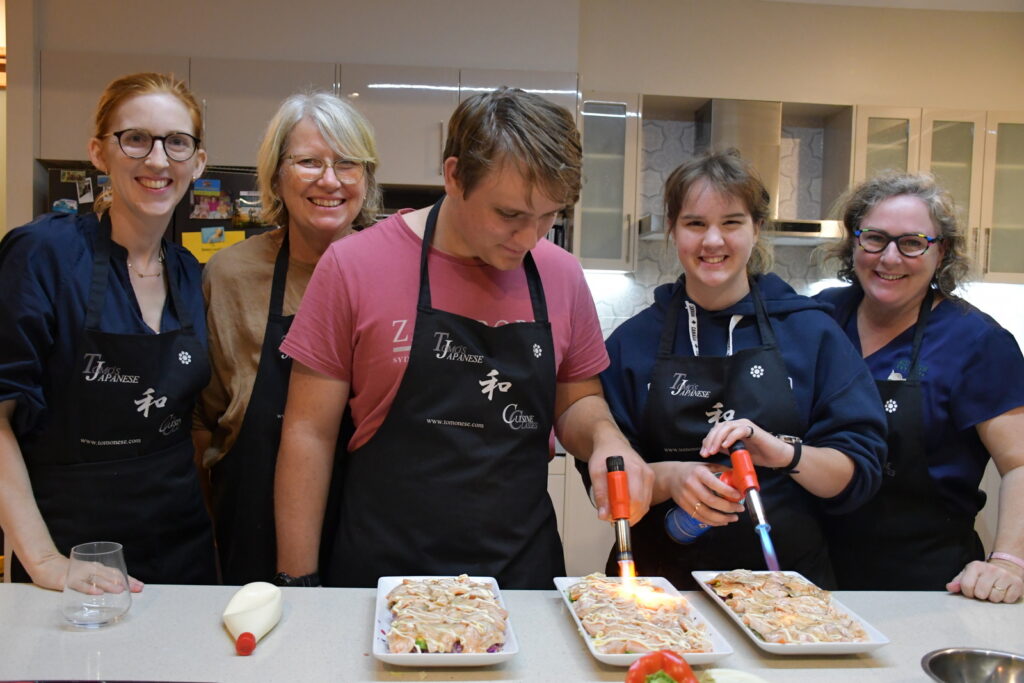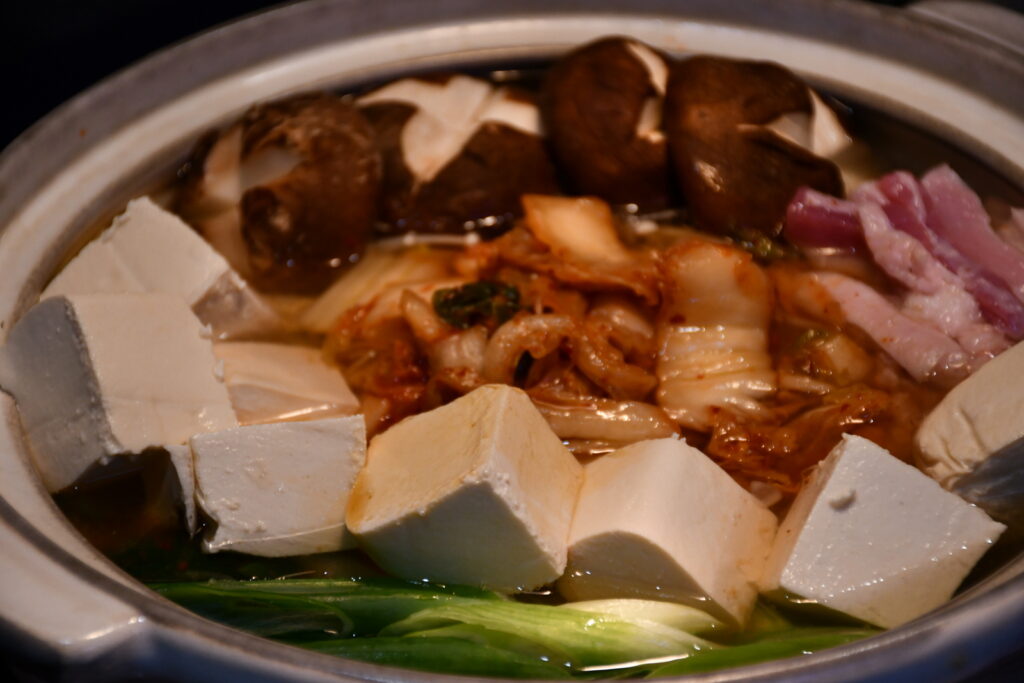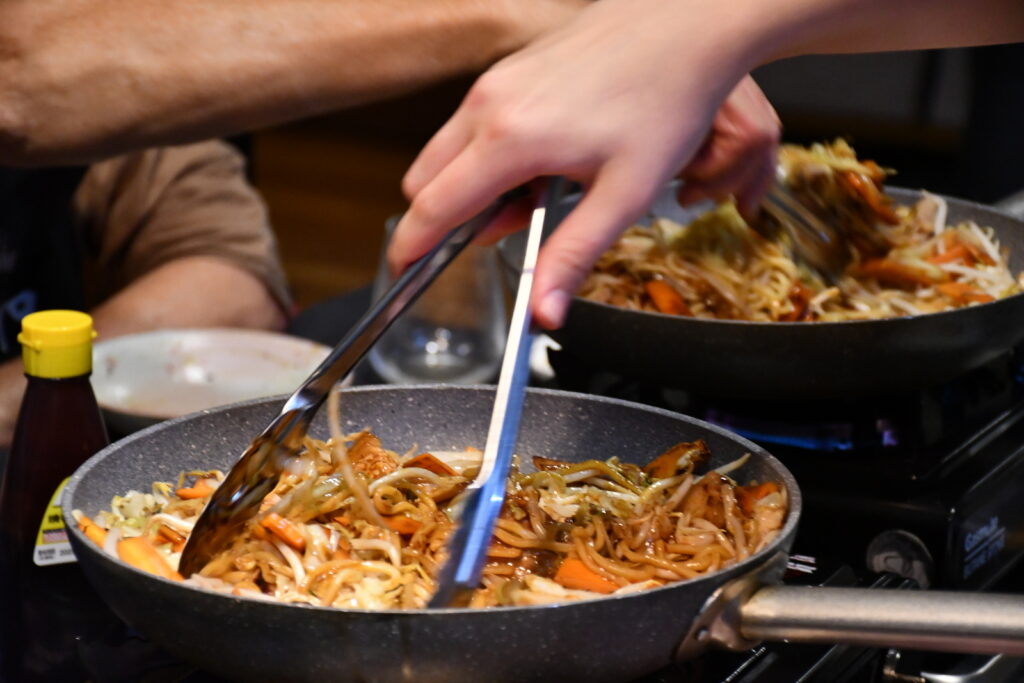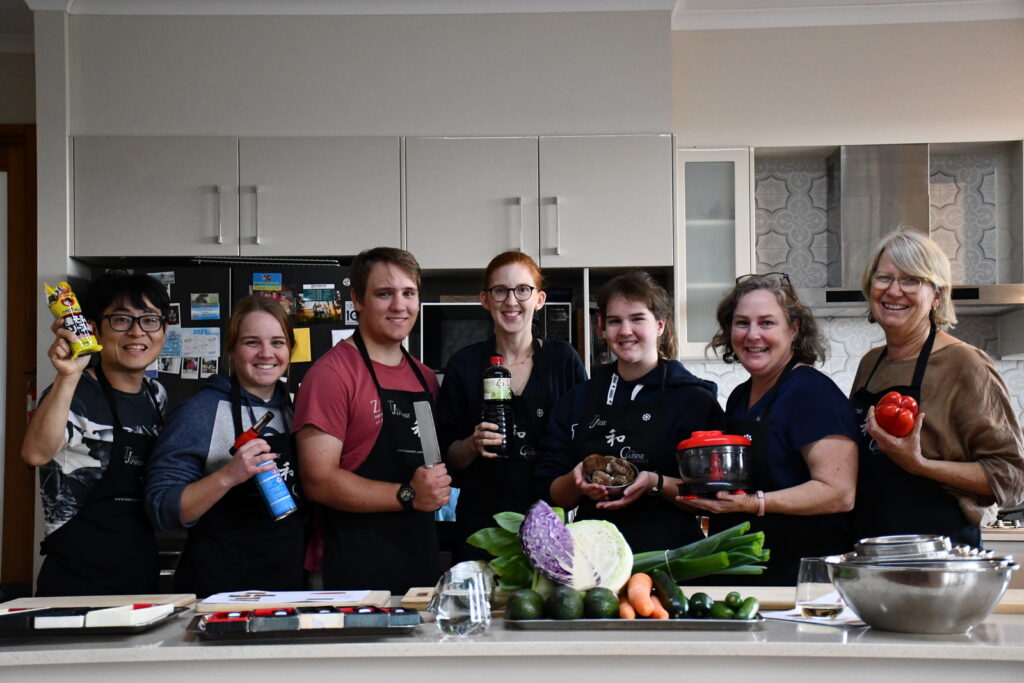Family and neighbour cooking class with Japanese hotpot and Salmon sushi cake
Our recent clients were a family who runs a cottage and has a passion for cooking, especially their children. When we arrived at their location, we were blown away by the stunning greenery and lake view.

We held a cooking class for the family and their friends who used to live in the neighborhood. As we chatted, we learned that their friends had a small farm with cows and pigs, and even made their own milk and cheese. Interestingly, even lactose-intolerant children could enjoy their homemade milk and cheese without any problems.
This experience made me realize the importance of knowing where our food comes from and how it’s produced. As a result, I am now more conscious about where my ingredients come from and how they are grown or raised.
During the class, we made three dishes: Tasmanian salmon, avocado, and a three-layered sushi cake with two types of quinoa. We learned how to peel the salmon skin, fillet a large salmon, and use a sashimi knife. Normally, we would buy salmon with the skin already removed at a seafood market, but due to a public holiday, we had to use salmon with the skin on. This turned out to be a great opportunity to liven up the cooking class, as we discovered that with a little bit of practice, peeling the skin was simple, and most salmon is sold with the skin on. Removing the skin can also be more expensive, so learning this technique in the class was an important point to take away.
The second dish is a kimchi and tofu hot pot. To prepare the hot pot, you need to cut the vegetables. In Japan, there are many ways to cut vegetables, and there are even decorative knives for this purpose. For example, there is a way to cut green onions diagonally to make them look larger. Carrots are also cut with decorative knives to create a flower pattern. Shitake mushrooms are cut with a cross to make them look like hot cross buns. Even if the ingredients are simple, the way they are cut can make a difference in taste and appearance. We received a lot of feedback from customers about these differences.
The third dish is yakisoba, which is a Japanese street noodle. We used pork belly raised by our customers for this dish. The fresh pork, raised in a healthy environment and fed with good food, had no unpleasant odor and was very rich in flavor. The combination of yakisoba and the pork belly was excellent, and we were able to make a really delicious dish.
Children, especially teenagers, are often uncertain and sometimes lose their confidence. By cooking together and listening to them, we can learn about their strengths and weaknesses. Cooking together is a simple activity that can be praised and shared when things go wrong. It’s all about communication and feedback. Through our cooking classes, I have come to realize how important this exchange can be.
Cooking is a wonderful way to bring people together and build connections. Whether you’re cooking with friends, family, or even strangers, it’s a chance to bond over a shared experience. Through cooking, we can learn more about each other and ourselves. We can discover new flavors and techniques, and we can create something delicious together. And most importantly, we can support each other and build each other up, one dish at a time.




